
From temperature extremes to shifting rainfall patterns, communities coast to coast are experiencing the increasing impacts of climate change. In many areas summers are hotter and drier, making gardeners more reliant on supplemental irrigation to grow the same plants that thrived for them in years past. Meanwhile, restrictions on watering in some regions make responding to drought more challenging. In the face of unpredictable rainfall and unprecedented temperature fluctuations, it’s more important than ever to invest in plants that can withstand waves of heat and drought.
I’m no stranger to extreme weather. Triple-digit temperatures are a common occurrence in my Oklahoma garden, and we often experience long droughts. Rather than react to changes in the weather, I’ve learned to plan for those conditions through careful plant selection. Certain plants have evolved a variety of strategies to cope with high temperatures and water stress, which commonly go hand in hand. When choosing new plants for your garden, look for water-saving traits such as small, silver, or hairy foliage, as well as adaptations such as taproots and succulence that help plants shrug off heat and make the most of limited water supplies. The following selections all exhibit these and other traits that help them deal with extreme heat.
See more
How to Read and Use the AHS Heat Zone Map for Gardening
Tips for Keeping Plants Alive Through a Heat Wave
8 Inspired Drought-Tolerant Plant Combinations for a Water-Wise Landscape
Perennials
‘Kobold’ dense blazing star thrives under normal irrigation or drought
Name: Liatris spicata ‘Kobold’
Zones: 3–8
Size: 18 to 30 inches tall and 6 to 12 inches wide
Conditions: Full sun; average, well-drained soil
Native range: Eastern United States and Canada
AHS heat zones: 1–9
Water-wise traits: Narrow leaves, underground water storage
Adored for its tall spikes of purple flowers that bloom in early summer, dense blazing star is a summer-blooming favorite of gardeners and pollinators alike (photo facing page). While there are some more drought-tolerant blazing star species, none are as widely adaptable in garden settings as Liatris spicata. ‘Kobold’ is a sturdy, upright selection of the species that doesn’t require staking (photo right). This plant thrives under normal rainfall conditions while also tolerating drought. It performs well in clay as well as in loose, free-draining soil, and it can withstand cold temperatures, heat, and humidity. Many of the more drought-adapted blazing star species, such as pink scale blazing star (L. elegans, Zones 6–10) and rough blazing star (L. aspera, Zones 3–8), rot under typical garden conditions, particularly wet winter soil, but make superior selections for gardeners in rocky or regularly dry climates.
Pineleaf penstemon won’t stop flowering even in dry weather

Name: Penstemon pinifolius
Zones: 4–9
Size: 10 to 12 inches tall and 12 to 18 inches wide
Conditions: Full sun; lean, well-drained soil
Native range: Arizona, New Mexico
AHS heat zones: 1–10
Water-wise traits: Small leaves with a hint of silver
Pineleaf penstemon blooms so profusely you’d think it would be a water hog. Tubular orange flowers cover the plant from late spring to midsummer, drawing hummingbirds and butterflies to the garden, while a tidy mound of needle-like evergreen foliage provides interest the rest of the year. This long-lived perennial thrives in all but the hottest locales and is particularly at home on rocky mountain slopes in the western states. Gardeners elsewhere will want to provide a well-draining bed of sandy or gravelly soil. Pineleaf penstemon makes a superb addition to rock gardens. Deadhead spent blooms for prolonged flowering and more vigorous growth.
‘Thin Man’ golden prairie grass is an especially adaptable native

Name: Sorghastrum nutans ‘Thin Man’
Zones: 4–9
Size: 3 to 6 feet tall and 1 to 2 feet wide
Conditions: Full sun; average, dry to medium, well-drained soil
Native range: Eastern and central United States and Canada
AHS heat zones: 1–9
Water-wise traits: Narrow leaf blades, specialized photosynthesis to reduce water loss
Stretching up to 6 feet tall and standing rigidly upright, ‘Thin Man’ golden prairie grass strikes a stunning profile. The slender leaf blades are among the bluest of any prairie grass and are topped by golden flower spikes in late summer. Flowers give way to bronze seed heads that provide food for songbirds in fall and winter. Golden prairie grass is a plant with a very wide native range, reaching from Canada to Mexico and covering all but the westernmost United States. ‘Thin Man’ was selected from a population in New Mexico, lending the variety greater heat and drought tolerance than more northern-growing selections.
‘Bright Edge’ Adam’s needle yucca is a colorful succulent with consistent variegation

Name: Yucca filamentosa ‘Bright Edge’
Zones: 4–9
Size: 2 to 3 feet tall and wide
Conditions: Full sun to partial shade; lean, dry to medium, well-drained soil
Native range: Southeastern United States
AHS heat zones: 5–11
Water-wise traits: Thick, waxy foliage; underground water storage
Yucca plants are usually associated with desert climes, but Adam’s needle yucca hails from a variety of eastern habitats, including dunes, open woods, and dry prairies. This plant performs beautifully in a garden setting, provided it has good drainage. As the common name suggests, the cultivar ‘Bright Edge’ has golden variegation along the leaf margin and produces variegated leaves more consistently than some other varieties of yucca. Tall flower spikes emerge in early to midsummer, bearing showy panicles of nodding, bell-shaped flowers that attract hummingbirds. Yuccas are deer resistant and, like their desert relatives, thrive in the heat. This variety is well suited to rock and gravel gardens, Mediterranean-style plantings, and coastal gardens.
Trees and Shrubs
Black dalea is an easy-care plant with enormous flower power

Name: Dalea frutescens
Zones: 7–11
Size: 2 to 3 feet tall and 3 to 5 feet wide
Conditions: Full sun; lean, dry to medium, well-drained soil
Native range: New Mexico, Oklahoma, Texas, northeastern Mexico
AHS heat zones: 1–8
Water-wise traits: Small foliage, leaf hairs
This dainty-looking shrub is extremely rugged, thriving with very little care onceestablished. Small purple blooms cover the plant from late summer into fall, offering vibrant color when little else is blooming as well as providing a rich source of nectar to bees and butterflies. Black dalea has a loose, open canopy. Prune it back hard in late winter or early spring to encourage denser growth and more-abundant blooms. With its fine, feathery foliage, this shrub provides a nice accent to perennial blooms in xeric gardens. It also tolerates reflected heat. For a stunning combo, pair it with salvias (Salvia spp. and cvs., Zones 5–11), Russian sage (Salvia yangii, Zones 5–9), and yuccas (Yucca spp. and cvs., Zones 4–11).
A tough, versatile shrub, blackhaw viburnum provides interest all season long

Name: Viburnum prunifolium
Zones: 3–9
Size: 12 to 15 feet tall and 6 to 12 feet wide
Conditions: Full sun to partial shade; dry to medium, well-drained soil
Native range: Eastern and central United States, southeastern Canada
AHS heat zones: 1–9
Water-wise traits: Extensive root system, widely adaptable
Viburnums provide excellent wildlife habitat, but not all species tolerate heat and drought. Among the more robust is blackhaw viburnum. With populations extending far south, this native shrub readily adapts to heat, dry soil, and occasional drought. Blackhaw viburnum provides showy spring blooms buzzing with pollinators, glossy summer foliage, and burgundy fall color. Dense branches shelter birds and other animals, which feast on the blue-black autumn fruits. This plant can be pruned into an accent tree but is most often grown as a multistemmed shrub that makes a handsome hedge or screen. It performs best in partial shade and requires more moisture in full sun.
Desert bird of paradise is a South American tree that can survive North American winters
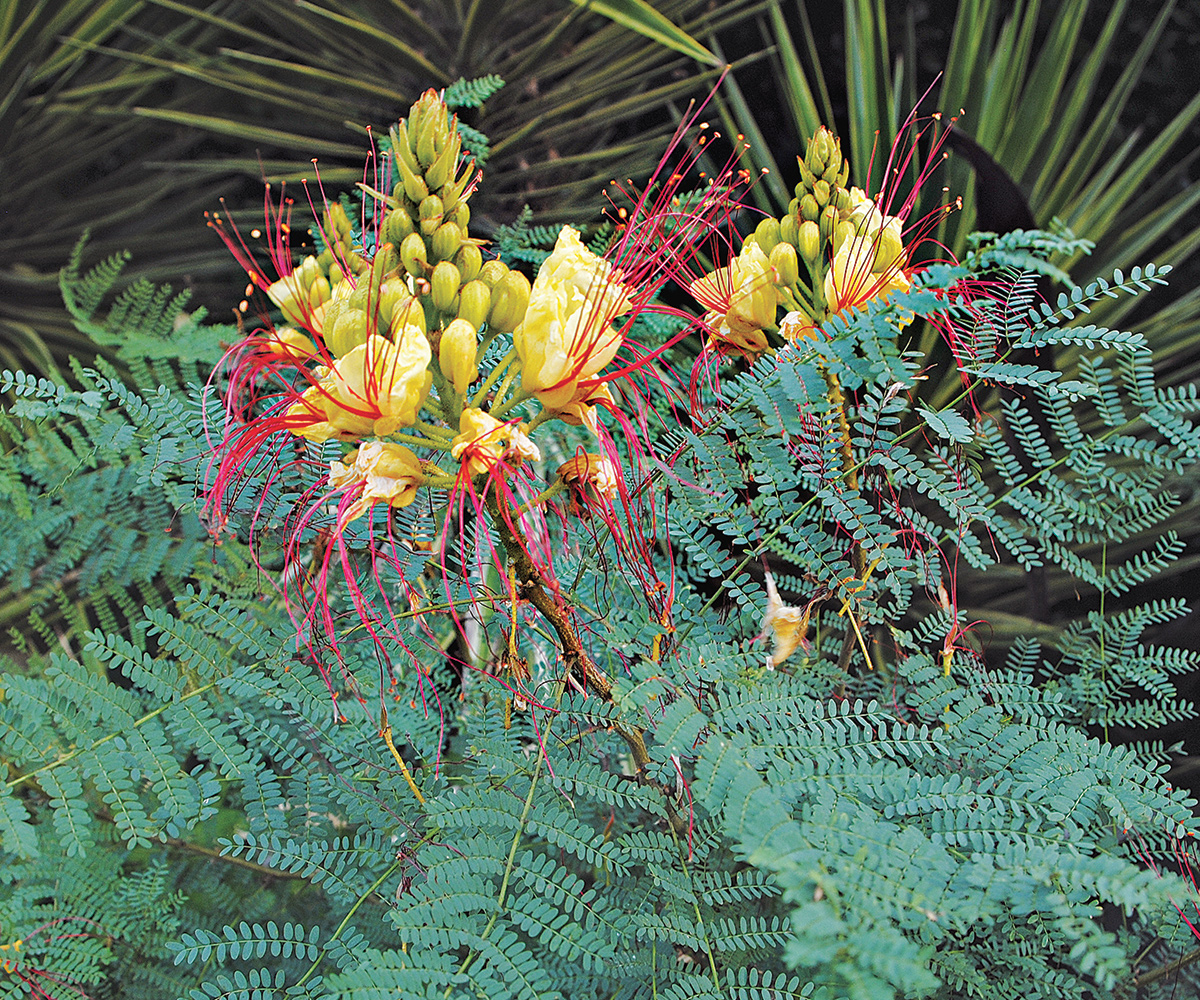
Name: Caesalpinia gilliesii
Zones: 7–11
Size: 7 to 10 feet tall and wide
Conditions: Full sun; average, medium, well-drained soil
Native range: Argentina, Uruguay AHS heat
Zones: 1–11
Water-wise traits: Small foliage, taproot
Desert bird of paradise is a woody shrub or small tree that produces feather-like foliage and showy yellow blooms with long red stamens. Hummingbirds and butterflies alike adore the tropical-looking flowers, which open in the heat of summer. Allow the soil to dry slightly between watering to promote deeper root development and to enhance drought tolerance. Though commonly cited online as hardy to Zone 8, it has survived in my Zone 6b garden, only occasionally dying back to the ground during the harshest winters. Though not listed as invasive in any U.S. state, desert bird of paradise has naturalized in some parts of the southwestern United States.
Want a birch tree that won’t struggle through summer? Turn to Dura Heat®
Name: Betula nigra ‘BNMTF’
Zones: 4–9
Size: 30 to 40 feet tall and 25 to 35 feet wide
Conditions: Full sun to partial shade; average to wet soil
Native range: Eastern United States
AHS heat zones: 1–10
Water-wise traits: Smaller, thicker foliage than the species
River birch is the most adaptable and heat-tolerant birch species, and Dura Heat® improves upon this feature, providing superior heat and drought tolerance as well as improved pest resistance to bronze birch borer. Dura Heat® is more compact than the straight species, with smaller, thicker leaves exhibiting better fall color. The creamy white bark exfoliates to reveal inner bark that is pinkish orange to cinnamon-hued (inset photo). This fast-growing selection makes an excellent shade tree under a variety of growing conditions. It is also a good choice for rain gardens, thanks to its ability to thrive in wet as well as dry soil.
Kim Toscano is a horticulturist, entomologist, garden designer, writer, and graphic designer. She previously hosted Oklahoma Gardening, a weekly television program produced by the Oklahoma Cooperative Extension Service.
Sources:
The following mail-order sources may offer some of the plants featured in this article:
- Eco Blossom Nursery – Fort Worth, TX; 817-720-5970, ecoblossom.com
- High Country Gardens – Clinton, UT; 801-769-0300, highcountrygardens.com
- Nature Hills Nursery – Omaha, NE; 402-934-8116, naturehills.com
- Plant Delights Nursery – Raleigh, NC; 919-772-4794, plantdelights.com
- Prairie Nursery – Westfield, WI; 800-476-9453, prairienursery.com
- Spring Hill Nurseries – Lawrenceburg, IN; 513-354-1509, springhillnursery.com
Fine Gardening Recommended Products

Dramm 17050 50′ ColorStorm 1/2″ Standard Soaker Hose

DeWalt Variable-Speed Cordless Reciprocating Saw with 6-Piece Saw Blade Set

Nelson Multi-Pattern Stationary Sprinkler
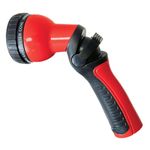
Dramm Revolution Adjustable 9-Pattern Metal Hose Nozzle

Morvat Heavy Duty Brass Y-Valve






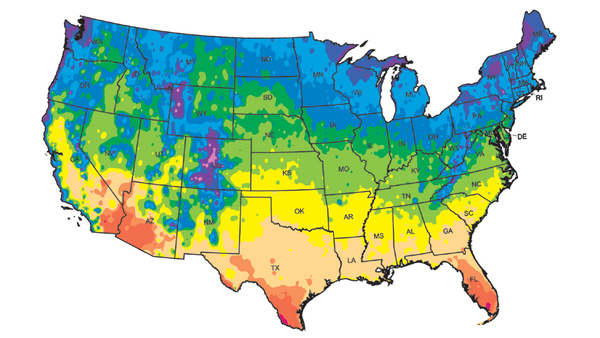


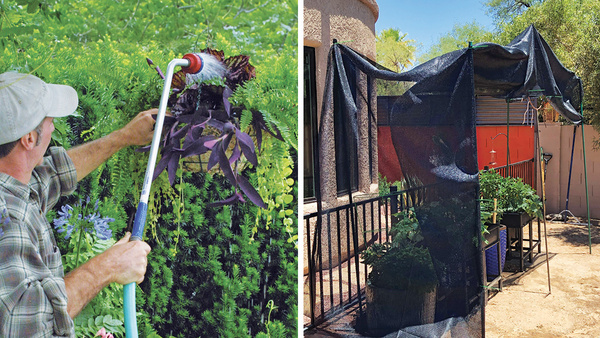





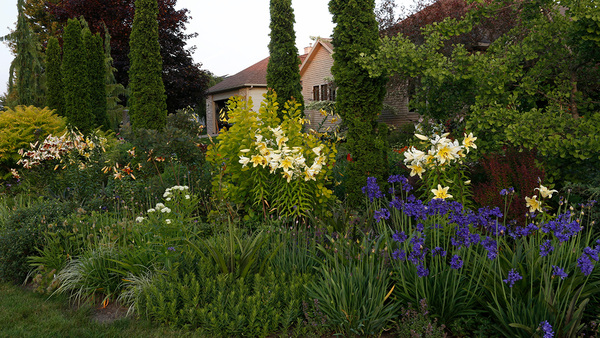
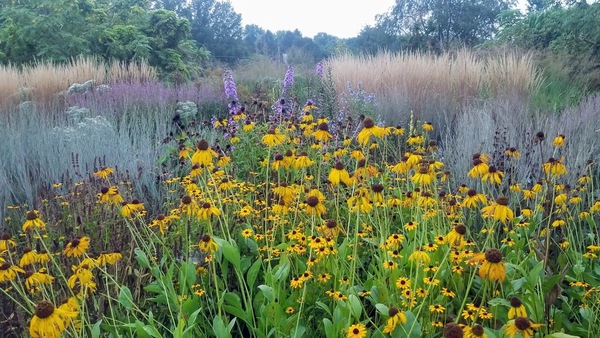





Comments
Log in or create an account to post a comment.
Sign up Log in